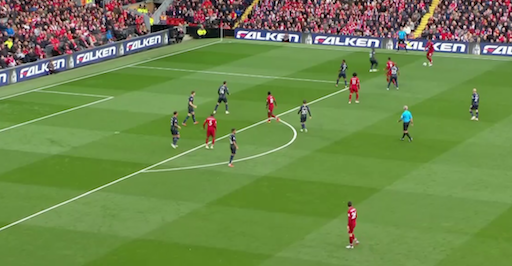WORLD CLASS COACHING
Attacking at Speed
By Luca Bertolini
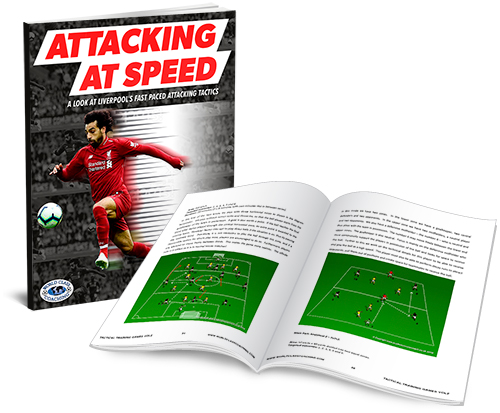
Table of Contents
PART TWO
Liverpool's Pressure Phase
Liverpool's Possession and Attacking Phase
Liverpool Pressure Phase
Liverpool possession and attacking phases depended on the pressure actions, as always for Jürgen Klopp teams. As Manchester built up from the goalkeeper, creating a 3-2 shape (goalkeeper, 1 fullback, 1 center back on the same line, the second center back and Fernandinho just out of the penalty area) Liverpool pressed very high with the front three (Sadio Manè, Roberto Firmino and Mo Salah), ready to counter an outside pass or the center opponents.
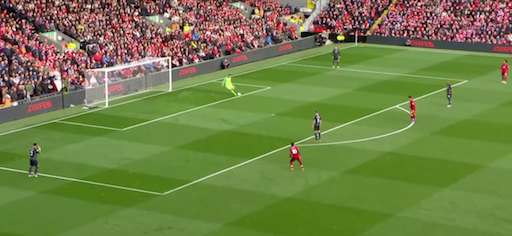
As instance, Ederson passed the ball toward Americ Laporte, in this situation; Salah was ready to press him, Firmino and Manè were turned toward the direction of play and they were ready to counter Fernandinho and Stones, if they would have received the ball.
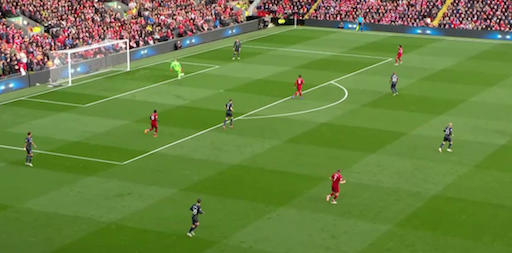
This is another example, of the 3-2 building up shape of Manchester City, where the center backs were placed closer to Ederson and the midfielders (Fernandinho and Bernardo Silva) were farther from the penalty area than in the prior situation. The front 3 were closing the forward passing lanes. Mendy may have received on the left, but Wijnaldum could press him easily.
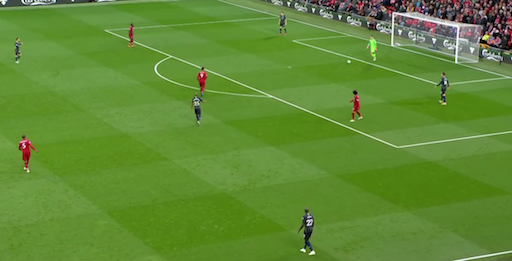
James Milner supported his team’s high press, if Bernardo Silva dropped deep to create a double pivot midfield and a three players "rondo" situation (together with Stone and Fernandinho), reducing his chances to turn and play out of the pressure zone.
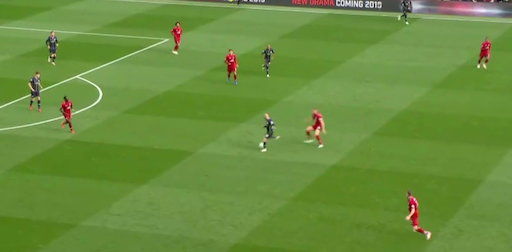
Bernardo Silva was forced to play backward by Milner (or he could have passed to right fullback Walker); all the receivers could be pressed by the three forwards and Bernardo Silva could have been double marked easily by Milner and Firmino.
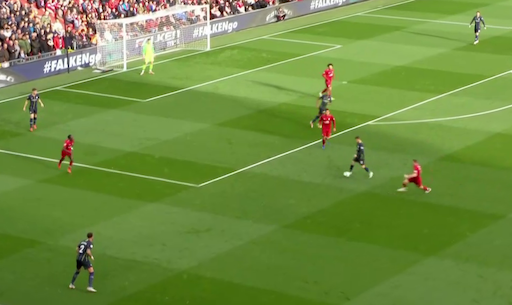
This press actions blocked passes between the center backs and they made difficult to play forward to the midfielders, who were always pressed by two of the three Liverpool's midfielders (Keita replaced Milner during the first half); Kyle Walker was forced to drop deep to be an additional passing option.
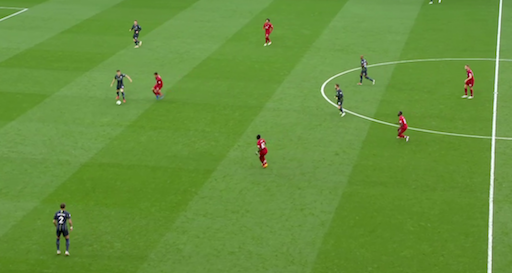
City played much more defensively than usual and we will see how this new tactical attitude caused issues for Liverpool's possession phase.
Liverpool's pressure phase was intense inside the middle third too, creating numerical advantage on the ball (6 v 5 in this picture) and strong side all around it (9 players were placed inside the quarter of the field, where the ball was being played).
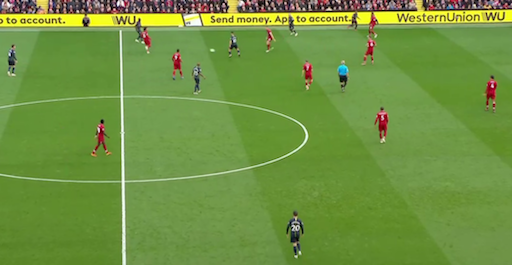
Here again 3 v 2 on the ball (Henderson, Wijnaldum and Robertson countering Mahrez and David Silva) and a 5 v 2 duel along the strong side; the only solution for Mahrez seemed to be a backward pass to Walker, Bernardo Silva or Fernandinho, who could have been pressed easily.
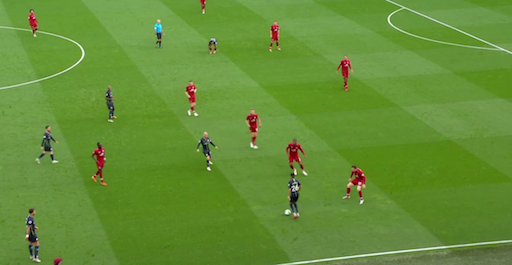
In this situation it's very clear how Liverpool tried to close down the sides for the opponents in possession, preventing them from exploiting their open play skills and from playing toward the center from flank, as Manchester City played with inverted wingers.
Sterling was forced to play backward into by a 2 v 1 duel while receiving, preventing him from passing forward to Aguero. Again, a very strong side (6 v 3) can be noticed.
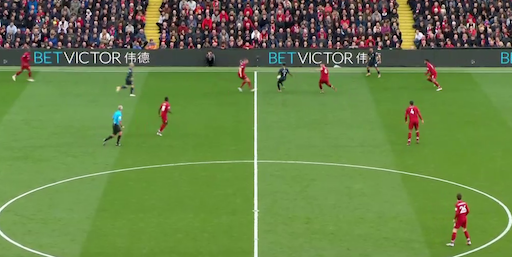
The high pressure of the three forwards and in the middle third created chances for quick transitions to attack inside Man City half field. In this example, Salah and Manè were facing the opposition goalkeeper and center backs, being able to counter them, Firmino could close the passing lanes toward Fernandinho and Bernardo Silva (or to counter them also) and Milner were ready to press Walker on the left side. Only a long ball could have solved the building up issues of this situation for Manchester City.
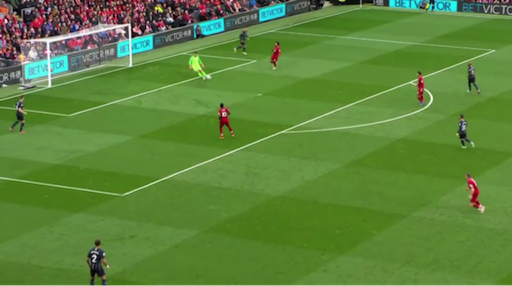
The strong pressure coupled with the natural trend of Manchester City to overload the flanks (the left one moreover) created transitions to attack opportunities for Liverpool.
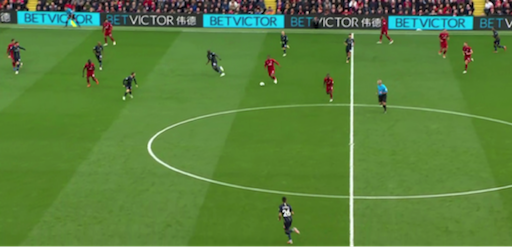
The pressure that Firmino added in dropping into midfield also helped the Reds to regain the ball quickly also, as Bernardo Silva and David Silva struggled in midfield against at least four pressing players, as we already talked about.
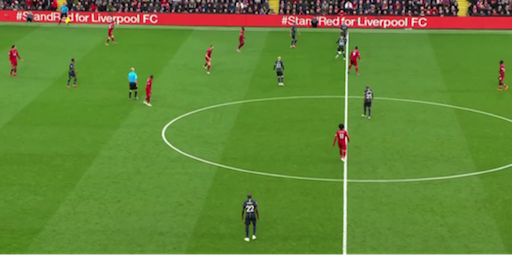
The risks for Liverpool defense came from the wrong timing of pressure that allowed the Silvas to play forward and in behind the defense line for Sterling and Aguero and creating chances, mostly during the second half.
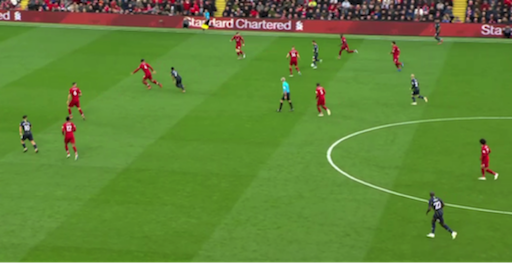
Liverpool targeted Benjamin Mendy as a source of possession by countering him...
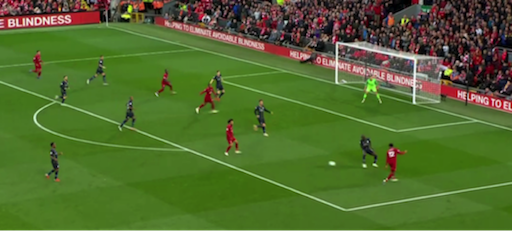
as Man City left fullback frequently lost the ball...
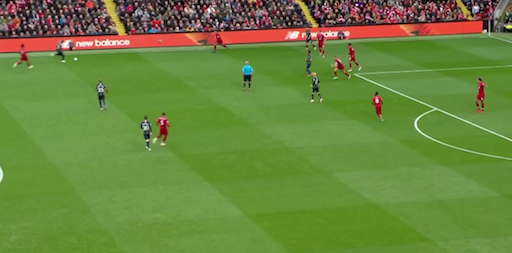
...while passing to Fernandinho and David Silva.
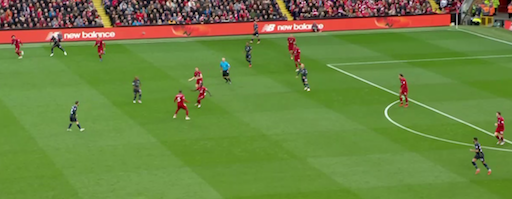
Mendy high positioning as pushing left side fullback and his trend to lose the ball when under pressure...
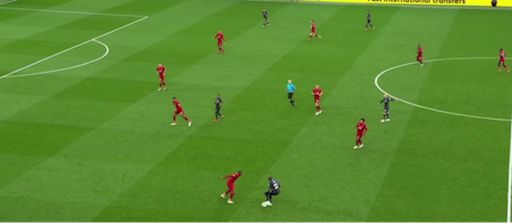
...could be exploited by the speed and directness of Salah on the right.
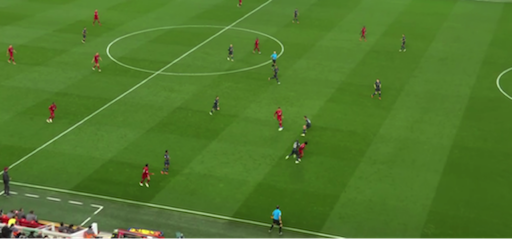
This situation is another example: Mendy lost the ball trying to pass toward Silva and Salah was ready to receive an in behind pass overcoming Laporte, who often ran out to cover the teammate.
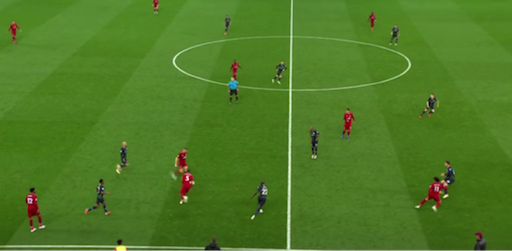
The performance of Aymeric Laporte, who often came out to play 1 v 1 with Salah, prevent the Reds from creating more threats on the counter break attacks.
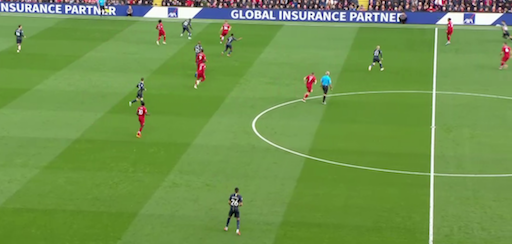
In this example Laporte ran out to double the mark and covering the center space, avoiding him to dribble toward the center on his left foot to finish.
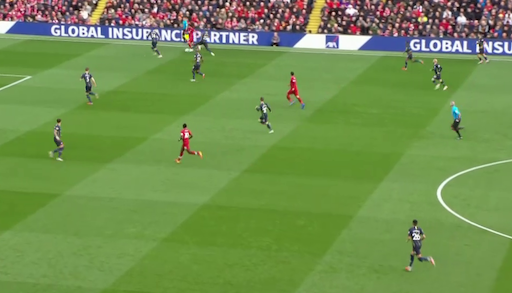
Liverpool possession and attacking phase
Jürgen Klopp asked his forwards to play deep and very close along the center channels when in possession to create space for the fullbacks; Manè and Firmino and Salah were usually placed along the half spaces and between the center backs.
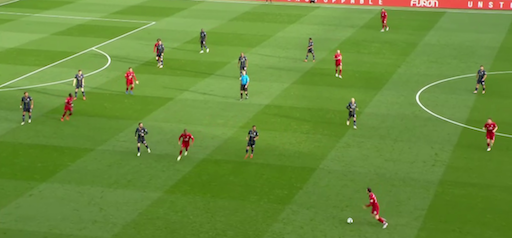
The forwards occupied the box to allow the fullbacks to send cross passes or to combine along the flanks; Robertson had the possession in this situation and he played directly inside the box, but he could have combine with Milner along the left side. The compact and close lines of Manchester City made difficult to send cross passes from the sides’ depth.
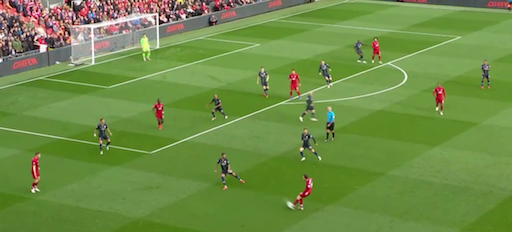
Klopp’s players also favored building from the goalkeeper, and they continued with this in the second half. A classic triangle shape was created with Allison and the center backs on the corners of the box, the fullbacks provided width on the flanks and Henderson, more than the other midfielders dropped back to receive.
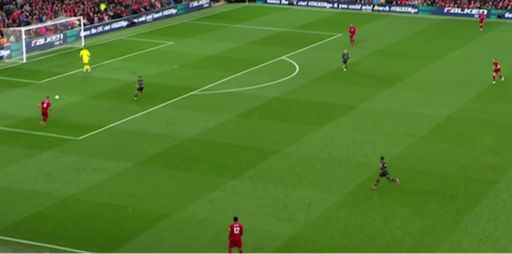
The goal of Manchester City pressure phase was to force the possession out, closing the fullbacks down the side and backward, closing the center passing lanes.
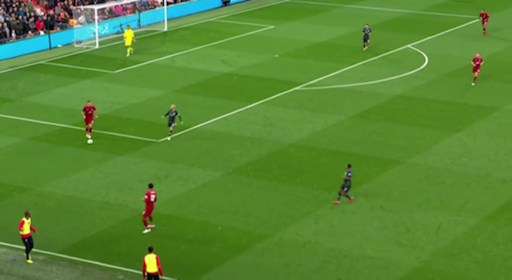
Sergio Aguero and David Silva formed a front two structure in City’s out of possession phase, to force the opposition possession sideward; Van Dijke was obliged to play toward the left side line, in this situation.
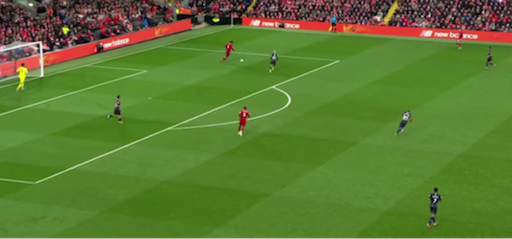
Once the building up phase rhythm was slowed down, Liverpool had to face duels with equal number of players inside their half field (a 6 v 6 duel was shaped in this situation); each Liverpool player could have been pressed through 1 v 1 duels.
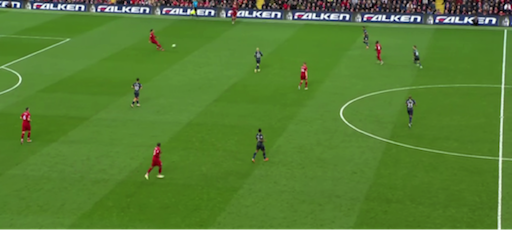
Here again, Liverpool started to build up through the goalkeeper and the center backs, in the second half...
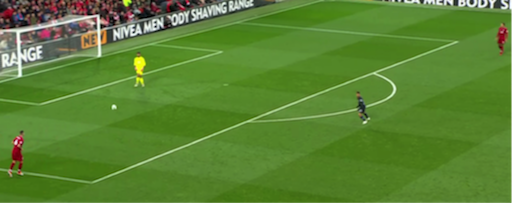
...but Man City’s immediate pressure forced the direction of play sideways and then counter the possession player with 1 v 1 duels.
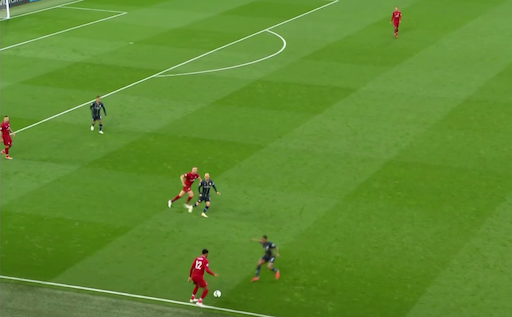
Despite the well timed pressure on the receivers...
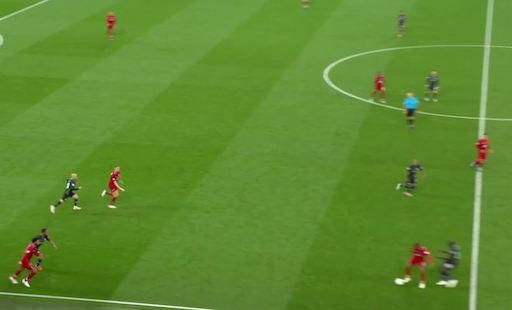
...Manchester City struggled to effectively pressurize their opponents when one of the front three was able to drop back and to combine with midfielders; Manè dropped back, equalizing the number of players in this 3 v 3 duel, Walkers was forced out of position and Bernardo Silva was out of time to press Keità while receiving. Robertson had forward space to exploit on the left and behind the pressure zone.
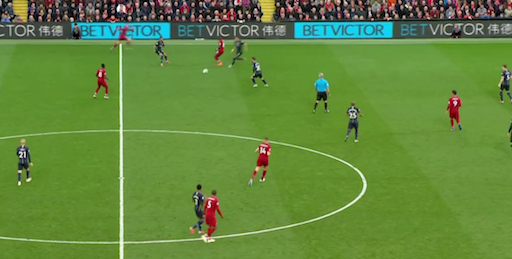
Salah and Manè, when he didn't drop back, were then forced to receive ground or aerial long balls behind City defense line and but they were often marked or forced sideways...
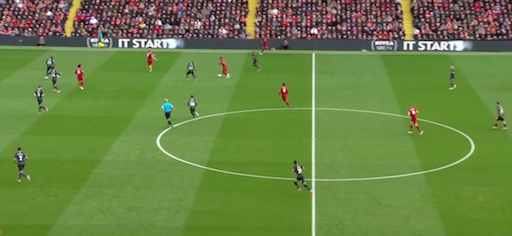
...when the opposition lines could cover the depth.
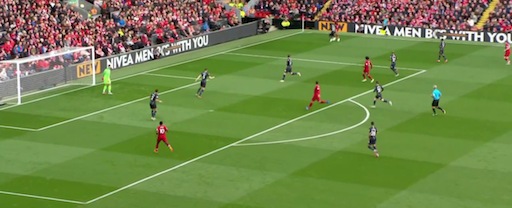
Long balls in behind, after Liverpool recovery of possession, were the most dangerous situations for City’s defense line, when Salah could face the opposition goal. The 4-4-2 defense lines of Man City were compact in this situation, but Firmino was placed on the right half space and Salah could attack Mendy at the back and toward the goal.
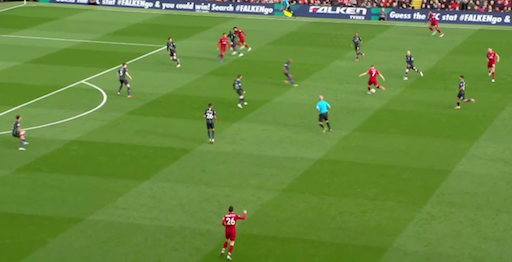
This is a quick transition to attack situation in the first half, Walker was out of position and Salah was placed between the left fullback and the left center back facing the goal and creating danger because of his speed skills. This was what Man City tried to avoid through compact defense lines and pressure on Liverpool building up; only transition phase was a real risk Liverpool was able to create.
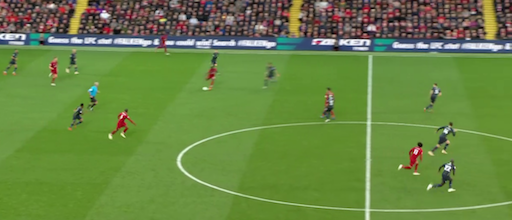
This is another example in the second half; the pressure on the left was not well timed and Roberston had the chance to play a long ball behind the defense line...
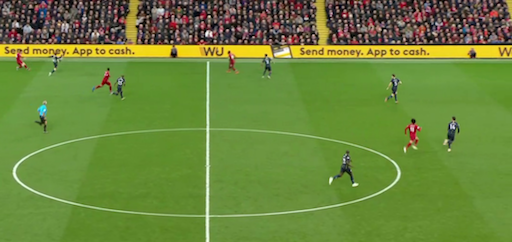
...and Salah could receive facing the opposition goal; Laporte had to cover him by a 1 v 1 duel; the other two defenders were clearly on late.
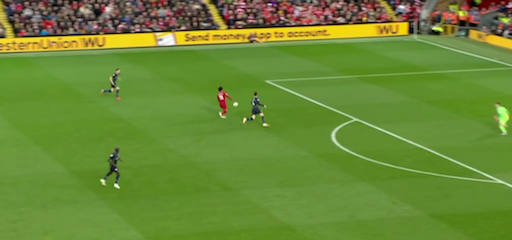
As Gomez and Andy Robertson looked to move outside of the midfield block and pushed forward, Wijnaldum, Milner and Keita (Milner’s first-half replacement) and even Henderson moved into a false fullbacks role, covering the space; Milner on the left side of the defense line here...
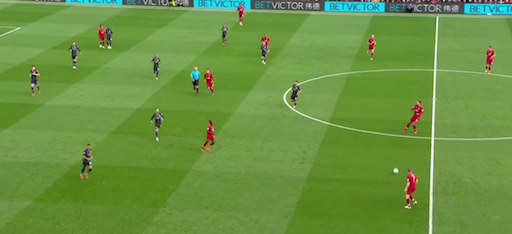
...and Henderson on the right side, in this picture.
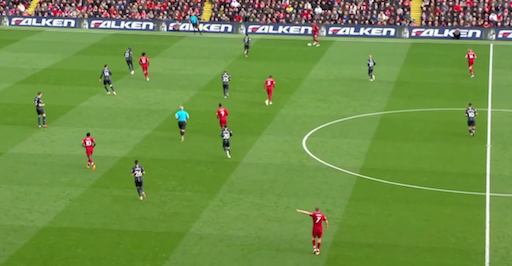
The offensive reason behind these movements was to help to progress the ball forward, paring and combining with the fullbacks.
Keita and Robertson on the left side...
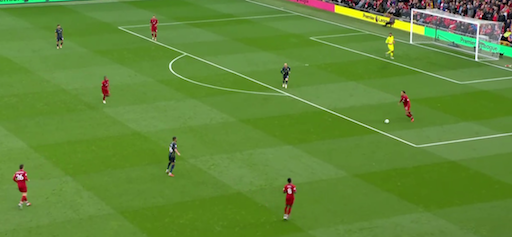
...Wijnaldum and Gomez along the right side.
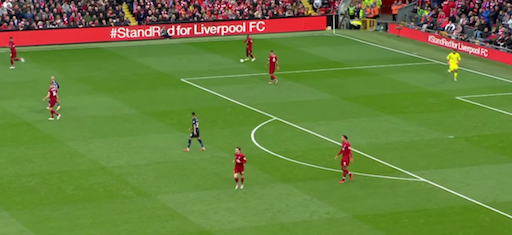
Paring the players on the flanks was a tactical solution to an issue we are going to analyze in the next pages, as to progress the ball forward was very hard for Liverpool, but through transitions to attack, Klopp tried to move the ball forward through outer combination on the right and on the left.
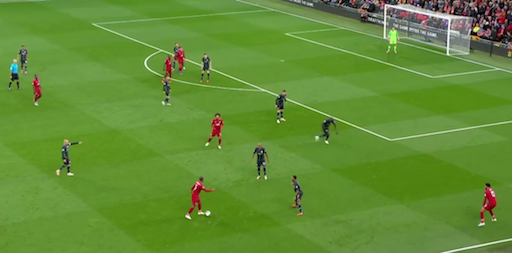
The defense structure of Man City in these pictures anticipate the issue Liverpool had to face in these situations too; when the advanced fullbacks received the passes, they often didn't enough time to control and play effective passes, because of the compactness of the opposition structure.
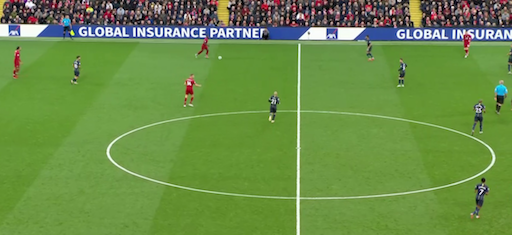
Gomez’s well-timed forward runs from right back became a common solution to try to solve this problem...
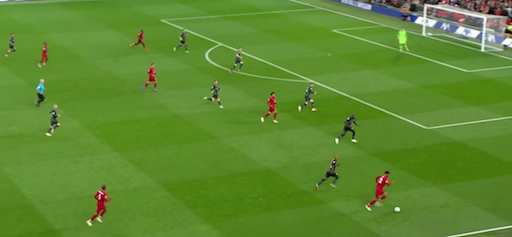
...but he was often isolated on the flank, like in these two examples, where Fernandinho first and Sanè then prevented him from passing toward the middle, or the box.
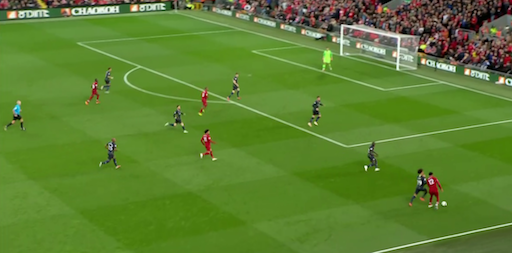
Direct passing from Jordan Henderson and Wijnaldum to Gomez out wide enabled Salah to move inside earlier, where he found more space to receive and combine with the dropping Firmino, when the right fullback could receive freely and raise his head up.
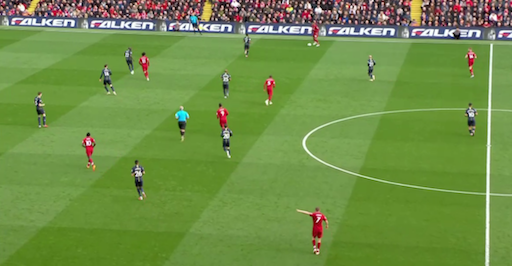
But here again, despite quick passing combination with Liverpool's three players near the ball...
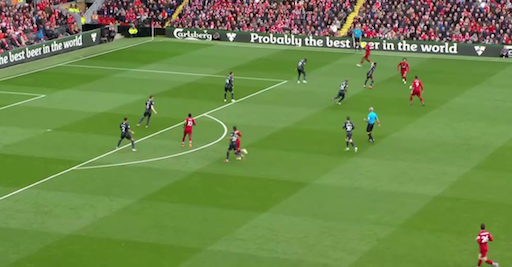
...the ball couldn't be moved forward because of the compactness of Man City back and midfield lines
